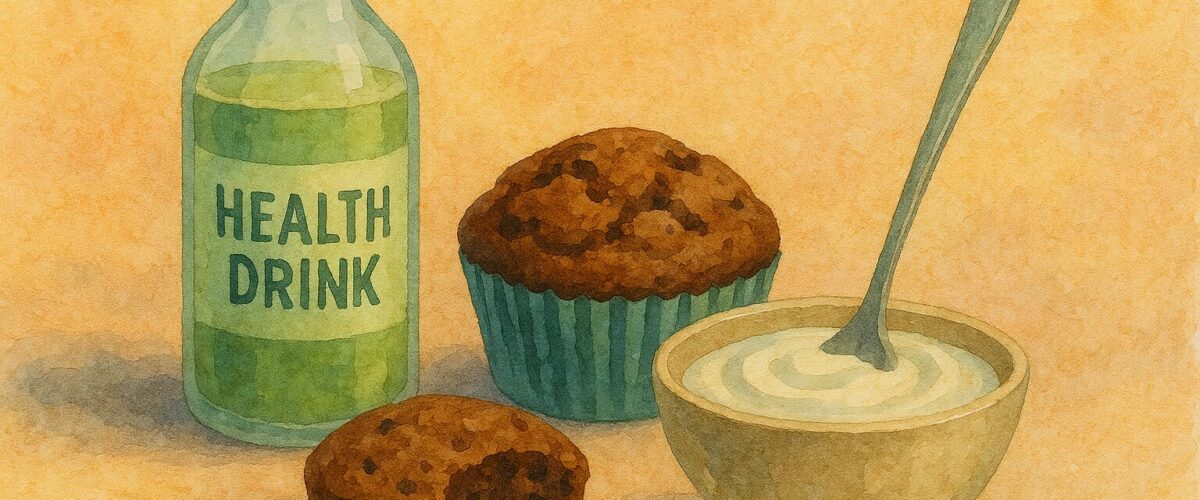Gut-boosting gummies, dopamine lattes, protein donuts — welcome to the world where comfort food gets a wellness upgrade. Functional indulgence is changing how we snack, soothe, and self-care.
For decades, health and indulgence lived in separate aisles. “Guilt-free” was a marketing term that quietly reinforced this divide: you could have either pleasure or purpose, but never both. Today, that binary is broken. Gen Z and younger Millennials are embracing a new logic — food should make you feel good, and be good for you, without compromise.
This is the driving force behind a growing wave of functional indulgence: foods that satisfy cravings while offering added health or wellness benefits — whether cognitive, emotional, hormonal, or gut-related.
🌱 What Is Functional Indulgence, Exactly?
Think of it as the sweet spot between comfort food and biohacking. It’s the adaptogenic cookie that calms you. The mood-enhancing chocolate bar. The protein ice cream with collagen and prebiotics. These aren’t just treats — they’re tools for self-regulation in a hyperstimulated, wellness-obsessed world.
The rise of this category is fueled by several overlapping trends:
📈 Trend 1: Mood Food
In a culture of constant emotional flux, people are turning to food as an accessible form of mood management. That’s why we’re seeing a spike in ingredients like:
- Ashwagandha (stress relief)
- Magnesium (calm, sleep support)
- L-theanine (focus & anxiety regulation)
- Adaptogens (resilience to stress)
Functional snacks now promise more than energy — they offer balance, clarity, or emotional cushioning.
🧠 Trend 2: Cognitive Snacking
Brain health is the new six-pack. Products designed to support focus, memory, and mental clarity are booming — from nootropic-infused matcha bars to microdose-style mushroom chocolate. It’s snacking with an agenda.
Consumers no longer see eating as a break from work — it is the work. Brain snacks fit seamlessly into a productivity-focused lifestyle where everything must do something.
🍬 Trend 3: The Supplement-Snack Crossover
Why take a pill when you can eat a gummy that tastes like candy? The line between supplements and snacks is dissolving fast. Leading this charge are hybrid products like:
- Collagen marshmallows
- Probiotic cookies
- Immune-boosting caramels
- Beauty chocolate with hyaluronic acid
These aren’t “diet” foods. They’re self-care in snackable form — and they look great on your feed, too.
A New Nutritional Psychology
In Nutrition in Transition, author Michael Ballarini argues that today’s food decisions are not just about biology or taste, but about emotional, social, and even symbolic value.
“Taste, health, and function have collapsed into a single decision-making moment — shaped by emotion, context, and social resonance.”
He introduces the concept of “acceptance width” — how open consumers are to non-traditional food formats — and “acceptance depth” — how deeply a food product connects to their personal identity or wellness narrative.
Functional indulgence thrives exactly at this intersection. It is novel, emotionally relevant, and often tied to a greater cultural movement: mental health awareness, biohacking, or body neutrality.
🚀 What’s Next?
Functional indulgence is just getting started. We’re already seeing movement in new directions:
- Menstrual-cycle-aligned snacks (hormone support by phase)
- Functional candy for kids (sleep or immune boosting)
- Snackable formats of traditional Chinese & Ayurvedic medicine
- CBD-free calming formulas for stress-conscious professionals
These innovations are answering the same core need: pleasure, with benefits.

